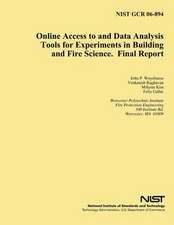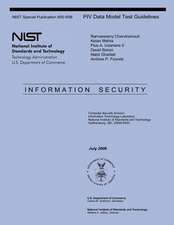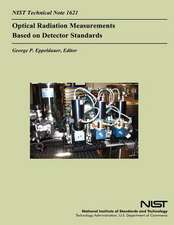Genetics of the Mouse
Autor Jean Louis Guénet, Fernando Benavides, Jean-Jacques Panthier, Xavier Montagutellien Limba Engleză Hardback – 9 dec 2014
The authors also discuss the importance of accurate phenotyping, which is now performed in the mouse clinics established worldwide and identify the limits of the mouse model, which under certain circumstances can fail to present the phenotype expected from the cognate condition in the human model. For each chapter an up-to-date list of pertinent references is provided.
In short, this book offers an essential resource for all scientists who use or plan to use mice in their research.
| Toate formatele și edițiile | Preț | Express |
|---|---|---|
| Paperback (1) | 1317.35 lei 6-8 săpt. | |
| Springer Berlin, Heidelberg – 11 sep 2016 | 1317.35 lei 6-8 săpt. | |
| Hardback (1) | 1120.18 lei 6-8 săpt. | |
| Springer Berlin, Heidelberg – 9 dec 2014 | 1120.18 lei 6-8 săpt. |
Preț: 1120.18 lei
Preț vechi: 1366.08 lei
-18% Nou
Puncte Express: 1680
Preț estimativ în valută:
214.35€ • 229.21$ • 178.72£
214.35€ • 229.21$ • 178.72£
Carte tipărită la comandă
Livrare economică 18 aprilie-02 mai
Preluare comenzi: 021 569.72.76
Specificații
ISBN-13: 9783662442869
ISBN-10: 3662442868
Pagini: 400
Ilustrații: XVII, 408 p. 106 illus., 44 illus. in color.
Dimensiuni: 155 x 235 x 30 mm
Greutate: 0.77 kg
Ediția:2015
Editura: Springer Berlin, Heidelberg
Colecția Springer
Locul publicării:Berlin, Heidelberg, Germany
ISBN-10: 3662442868
Pagini: 400
Ilustrații: XVII, 408 p. 106 illus., 44 illus. in color.
Dimensiuni: 155 x 235 x 30 mm
Greutate: 0.77 kg
Ediția:2015
Editura: Springer Berlin, Heidelberg
Colecția Springer
Locul publicării:Berlin, Heidelberg, Germany
Public țintă
ResearchCuprins
Origins of the Laboratory Mouse.- Basic Concepts of Reproductive Biology And Genetics.- Cytogenetics.- Gene Mapping.- The Mouse Genome.- Epigenetic Control of Genome Expression.- Mutations and Experimental Mutagenesis.- Transgenesis and Transgenic Animals.- The Different Categories of Genetically Standardized Populations of Laboratory Mice.- Quantitative Traits and Quantitative Genetics.
Textul de pe ultima copertă
This book, written by experienced geneticists, covers topics ranging from the natural history of the mouse species, its handling and reproduction in the laboratory, and its classical genetics and cytogenetics, to modern issues including the analysis of the transcriptome, the parental imprinting and X-chromosome inactivation. The strategies for creating all sorts of mutations, either by genetic engineering or by using mutagens, are also reviewed and discussed in detail. Finally, a last chapter outlines the methodology used for the analysis of complex or quantitative traits.
The authors also discuss the importance of accurate phenotyping, which is now performed in the mouse clinics established worldwide and identify the limits of the mouse model, which under certain circumstances can fail to present the phenotype expected from the cognate condition in the human model. For each chapter an up-to-date list of pertinent references is provided.
In short, this book offers an essential resource for all scientists who use or plan to use mice in their research.
The authors also discuss the importance of accurate phenotyping, which is now performed in the mouse clinics established worldwide and identify the limits of the mouse model, which under certain circumstances can fail to present the phenotype expected from the cognate condition in the human model. For each chapter an up-to-date list of pertinent references is provided.
In short, this book offers an essential resource for all scientists who use or plan to use mice in their research.
Caracteristici
First comprehensive and up-to-date overview on mouse genetics since the mid-nineties
Essential reading for scientists working in mouse research
Written by experienced geneticists
Includes supplementary material: sn.pub/extras
Essential reading for scientists working in mouse research
Written by experienced geneticists
Includes supplementary material: sn.pub/extras




























